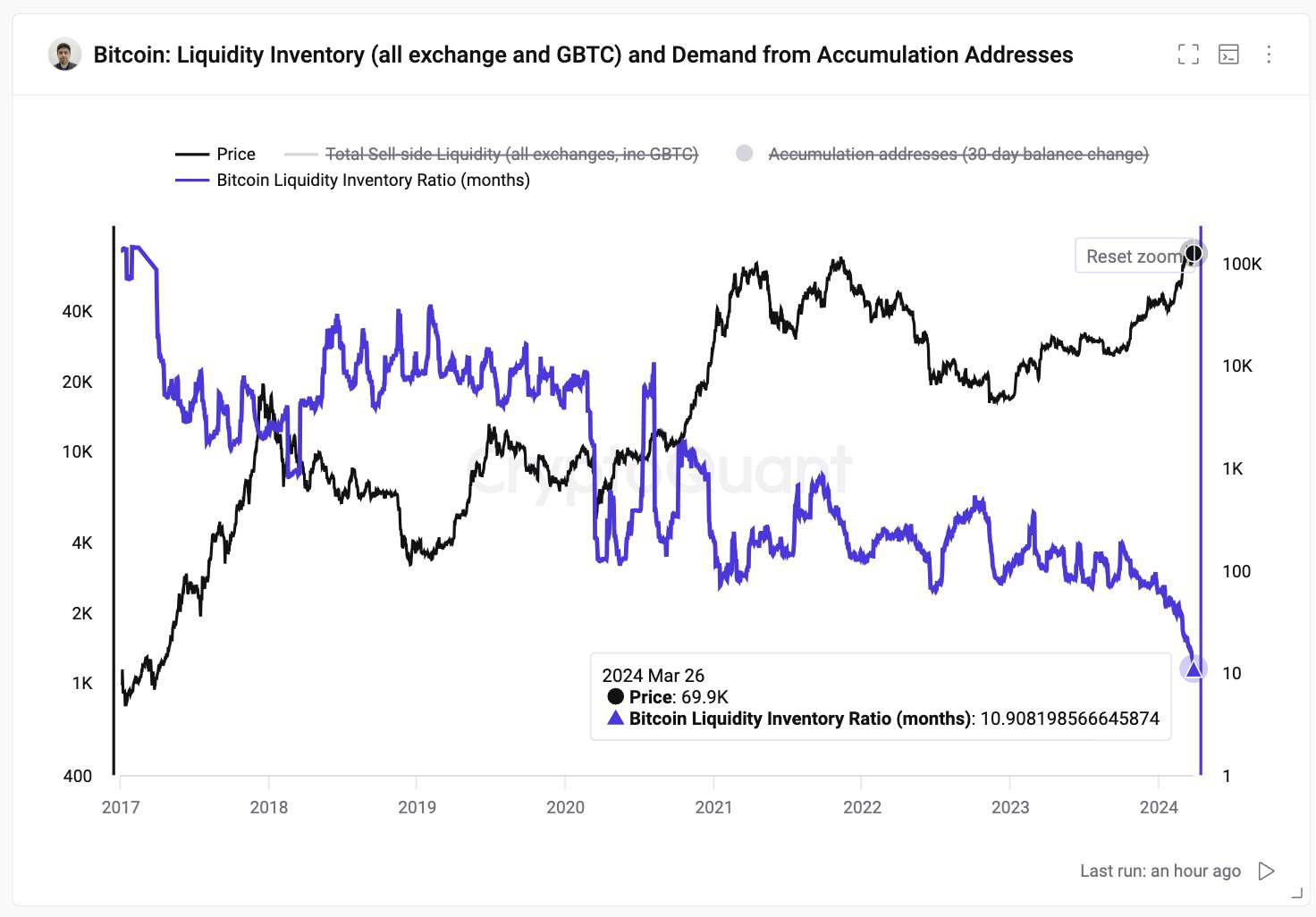On-chain data shows that the Bitcoin “Liquid Inventory Ratio” has fallen to an all-time low. Here’s what this could mean for property.
Bitcoin sell side liquidity is currently low relative to demand
In a post on X, CryptoQuant founder and CEO Key Young Joo discussed recent trends in the liquid inventory ratio for Bitcoin. Liquid inventory ratio is an on-chain indicator that tells how the total sell-side liquidity inventory of an asset compares to its demand.
The sell-side liquidity inventory of assets is measured using four components: total exchange reserves, miner holdings, OTC desk holdings, and BTC seized by the US government.
Of these, exchange reserves (ie, the total amount sitting in the wallets of centralized exchanges) are the largest potential source of sell-side liquidity.
The chart to the right below shows how the coin’s sell-side liquidity inventory has changed over the years:
The value of the metric appears to have been going down in recent years | Source: ki_young_ju on X
From the graph, it can be seen that the sell-side liquidity of cryptocurrencies has been going down for some time now. This decline is mainly due to the depletion of exchange reserves, as investors continue to push towards self-possession, possibly preferring to hold onto their bitcoins for longer periods of time.
The chart on the left shows the trend in aggregate demand for assets. Here, demand is calculated using the 30-day balance change of “accumulation addresses”.
Accumulated addresses are those that only have a history of buying BTC and no history of selling. Exchanges and mining institutions are excluded from this group, of course, regardless of whether they meet the criteria for deposit addresses, instead being counted under sell-side liquidity.
Clearly, demand for Bitcoin has increased recently as new players such as exchange-traded funds (ETFs) have entered the fray. All of this BTC is potentially circulating and being locked in wallets known to host one-way traffic.
Given these two developments in sell-side liquidity inventory and demand, it is not surprising to see that the liquid inventory ratio, which measures the ratio between the two, has fallen recently.
The trend in the Liquid Inventory Ratio for the asset over the past few years | Source: ki_young_ju on X
After the latest decline in the indicator, its value has, in fact, fallen to a new all-time low. This means that sell-side liquidity has never been so low relative to demand for Bitcoin.
Given this trend, it will be interesting to see how the BTC rally pans out from here, as the supply available for purchase only continues to tighten.
BTC price
Bitcoin had previously suffered some losses, but bullish winds have returned to the coin as its price is now back above $70,200.
Looks like the price of the asset has enjoyed a sharp surge over the last few days | Source: BTCUSD on TradingView
Featured images from Shutterstock.com, CryptoQuant.com, charts from TradingView.com
Disclaimer: The article is provided for educational purposes only. It does not represent NewsBTC’s views on whether to buy, sell or hold any investment, and investments inherently involve risk. You are advised to do your own research before making any investment decisions. Use the information provided on this website entirely at your own risk.

